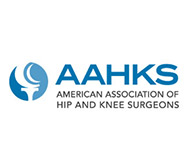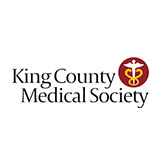Treatment for Proximal Humerus Fractures
What is it?
Proximal humerus fractures are fractures of the shoulder that involve the ball (humeral head) and the attachment sites of the rotator cuff (greater and lesser tuberosities). They occur from a traumatic falls or accident in older patients typically. However, they can occur in patients of any age. The injury results in pain and swelling in the shoulder region and can lead to long term stiffness and reduced function of the shoulder, regardless of the treatment undertaken.
What factors are considered when determining treatment?
There are many different treatment options available to patients who have sustained a proximal humerus fracture. The decision to pursue a particular treatment is based on many factors, some of which are listed below:
- Patient age
- Expected activity level
- Number of fracture parts and displacement
- The patient's bone quality
- Patient's overall health
What are the risks?
The surgery itself is generally very safe in most healthy patients. There are the general risks of anesthesia and also those risk associated with the surgery. Surgical risks can vary widely depending on the treatment option chosen.
Risks of Non-operative Treatment:
- Stiffness
- Loss of Function
- Avascular Necrosis (loss of blood supply to humeral head)
Risks of Fixing the Fracture:
- Stiffness
- Loss of Function
- Nerve Injury
- Hardware Complications
- Avascular Necrosis (loss of blood supply to humeral head)
Risk of Shoulder Replacement:
- Stiffness
- Loss of function
- Nerve Injury
- Dislocation
What type of proximal humerus fractures are there?
Proximal humerus fractures come in all difference shapes and sizes. Traditionally, they have been named by the number of major parts involved in the fracture. There are 4 major "parts" that are considered (1) the humeral head, (2) the lesser tuberosity, (3) the greater tuberosity, and (4) the humeral shaft. A fracture is described by the number of parts which are significantly displaced. The more displaced the fracture fragments, and the greater number of fragments involved, the more severe the fracture.
What are the treatment options?
Non-Operative Management: Many proximal humerus fractures can be managed without surgery. This is particuarly true for patients who do not have much displacement of their fracture. If the location of the tuberosities (attachment sites for the rotator cuff) are close to their anatomic position, reasonable function can typically be achieved. Even more severely displaced fractures can be treated without surgery and have satisfactory outcomes with minimal pain, however, function can be compromised.
Fixing the Fracture: Fractures can also be fixed using plates and screws, and more rarely, a rod or pins. This helps secure the bone fragments in an anatomic position so that they heal appropriately. This is typically the best option for younger patients with displaced fractures to optimize long-term function and can be a good option for some older patients as well. The one major risk of fixing proximal humerus fractures is that the blood supply to the humeral head may have been disrupted at the time of the injury. If this occurred, then the humeral head could collapse leading to worse function over time.
Shoulder Replacement: In severely displaced fractures, patients with poor bone quality, or fractures that disrupt the blood supply to the humeral head, replacement of the shoulder can sometimes provide the most predictable results. Replacement options include a hemiarthroplasty (just the humeral head is replaced) or a reverse shoulder arthroplasty (the head and socket are replaced). Reverse shoulder replacement does not rely on the fracture fragments healing in order to have reasonable function. Therefore, in older patients with severely displaced fractures, this is often the best option.
What is the recovery like?
Recovery from treatment of a proximal humerus fracture can vary depending on how severe the fracture is and what treatment is undertaken. In general there will be a period of immobilization in a sling (2-6 weeks) followed by range of motion exercises and progressive strengthening. Often times, reverse shoulder replacement can be a faster recovery for older patients assuming early post-operative complications are avoided. Most patients are back to functional use of their arm with some limitations by 3 months with full recovery often taking > 6 months.







